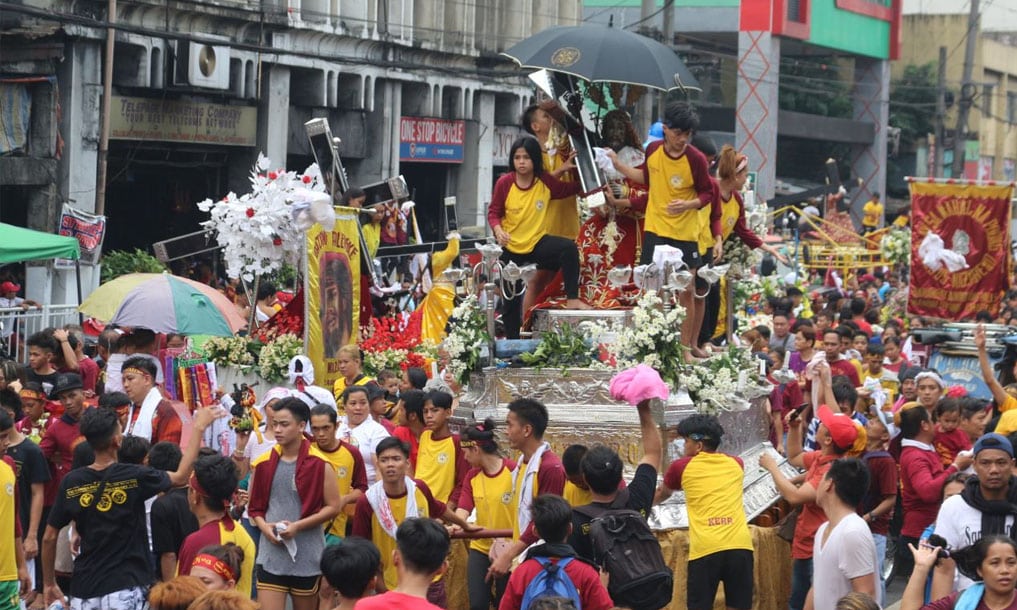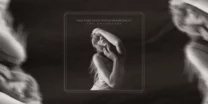DAYS after celebrating the Feast of the Black Nazarene, some devotees shared one of their wishes to the Black Nazarene: to go back celebrating the feast day with the traditional Traslacion.
But it looks like they would never ever see Traslacion again.
According to Quiapo church Attached Priest Fr. Earl Valdez the long-term focus of the Minor Basilica of the Black Nazarene is the gradual resumption of the feast’s celebration.
“We do not know for sure because our long-term plan is for gradual resumption but resumption not as it was in the pre-pandemic years,” he said in Filipino.
“Whatever the concept of Traslacion we can achieve in the coming years, we can pick up something from what we have done and what we are doing this year and with the past year.”
He likewise said there would be changes, but the traditional Traslacion devotees used to practice would no longer return.
For the third straight year, Quiapo Church officials and the city government of Manila decided to forego the traditional procession of the image of the Black Nazarene from Quirino Grandstand to Quiapo Church as a way to curb the spread of COVID-19 infections.
This year, Pagpupugay (tribute) replaced the Pahalik (kissing of the image of the Black Nazarene) and Walk of Faith procession in place of Traslacion (solemn transfer of the image of the Black Nazarene) to prevent the spread of bodily fluids during the conduct of the said activity.
Prior to the start of this year’s celebration of the feast of the Black Nazarene, Quiapo church Attached Priest Fr. Earl Valdez said considering the current status of the global health crisis, the usual Traslacion will not happen in the next coming celebrations.
A million devotees came
During the feast, the Quiapo Church was visited by 925,782 devotees, while the Quirino Grandstand hosted 254,653 worshippers during the three-day events.
In the “Walk of Faith” procession on January 8, participants marched from the Quirino Grandstand to the Quiapo Church for more than. This brought the total number of participants in the event to 88,000.
The data also showed that the largest number of devotees came on the feast day, January 9, with 709,945 faithful.
On January 6, Quiapo Church drew 95,160 devotees who took part in the event before the start of Pagpupugay.
Prayer stations
Since Manila City Mayor Honey Lacuna allowed the comeback of other religious rituals dedicated to the feast, the Quiapo Church authorities expected an influx of devotees to participate in the event. Various prayer stations were installed around Quiapo Church to cater to all the devotees to control the volume of faithful gatherings in Quiapo.
All prayer stations were also installed with LED televisions synchronizing the masses held inside the Quiapo Church and replicas of the Black Nazarene so the faithful could wipe the image together with their prayers.
Volunteers also helped attendees in the prayer stations to maintain order during the pagpupugay in the said prayer stations – which led to the smooth flow of devotees lining up.
Emergency response
Quiapo Church authorities had closed the Quezon Bridge to all devotees and motorists as it is the fastest exit point for emergency personnel in case of emergency during the feast. Medical front liners were also on standby along the bridge to assist all injured devotees who needed emergency aid.
The latest tally from the Department of Health indicated that some 642 health consultations were logged during the three-day activities intended for the Feast of the Black Nazarene from January 6 to 9.
Of the total cases, DOH data showed that four consultations were hospitalized, three were already discharged, and one patient is still under observation.
The majority of the consultations, or 577, accounted for cardio-related consultations, particularly hypertension, hypotension, chest pain, and blood pressure monitoring, among others. This is followed by trauma-related with 43 (wounds, lacerations), neurological-related with 10 (headaches, dizziness), respiratory-related with 8 (difficulty breathing, asthma), and only four were gastro-related (abdominal pain, loose bowel movement).
Hygiene
During the Pagpupugay, ushers were stationed at the points of entry, exit, and in the image of the Black Nazarene to ensure hands were sanitized before and after holding the image. In the case of Quiapo, volunteers and Hijos del Nazarenos were also deployed to different hygiene areas to assist devotees in going to the assigned portalet.
Visible cops
Some 3,000 personnel from the ranks of the Manila Police District and 2,000 personnel from the National Capital Region Police Office were dispersed during the walk of faith procession route and the feast day itself.
Over 700 traffic personnel were deployed in significant thoroughfares around the Basilica, according to the Metro Manila Development Authority.
No crimes were also reported during the three-day activities, said the Manila Police District.
What went wrong?
Discipline.
With the devotees’ eagerness to attend the Quiapo events, some devotees were no longer following the minimum public health standards, including wearing face masks. Some faithful weren’t following the ushers, cutting the queues intended for those who wished to go inside the Plaza Miranda.
Some Hijos del Nazareno announced during the feast: “If you are truly a devotee of the Black Nazarene, you should know how to wait.”
But will the long-standing tradition that Filipinos used to practice back to its traditional setup?
The answer is no.
Banner Photo Credit: Glendale Lapastora








